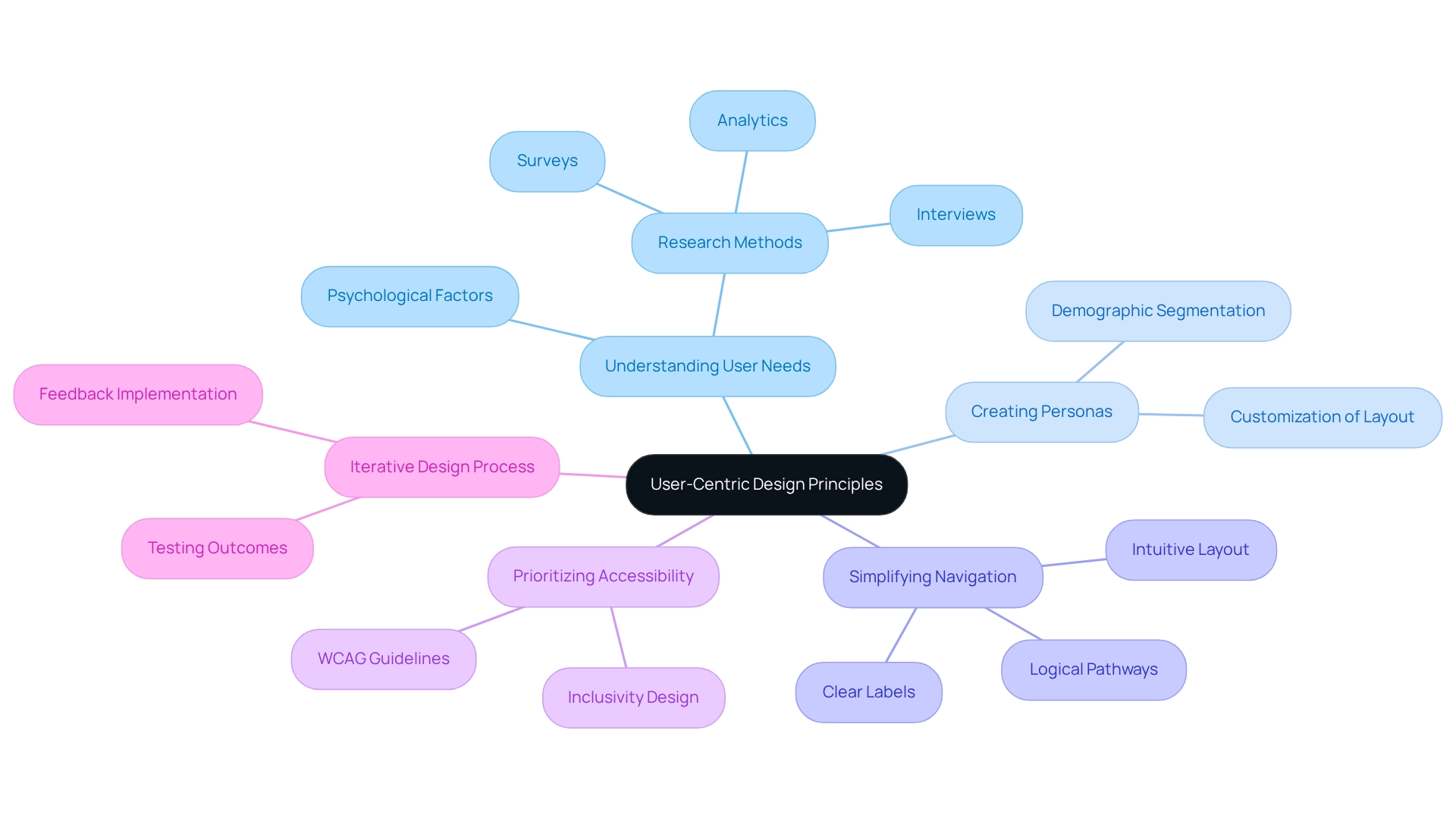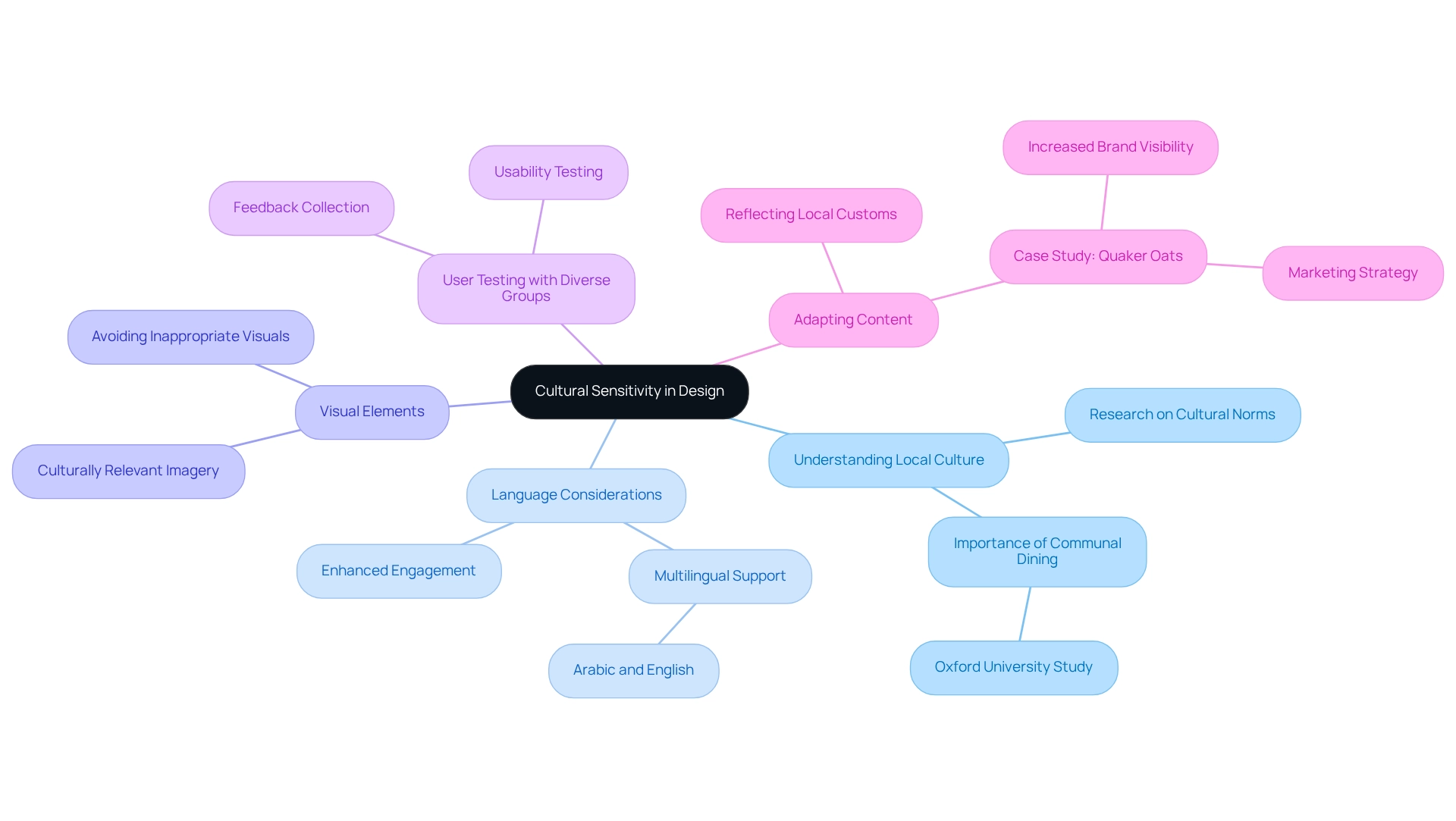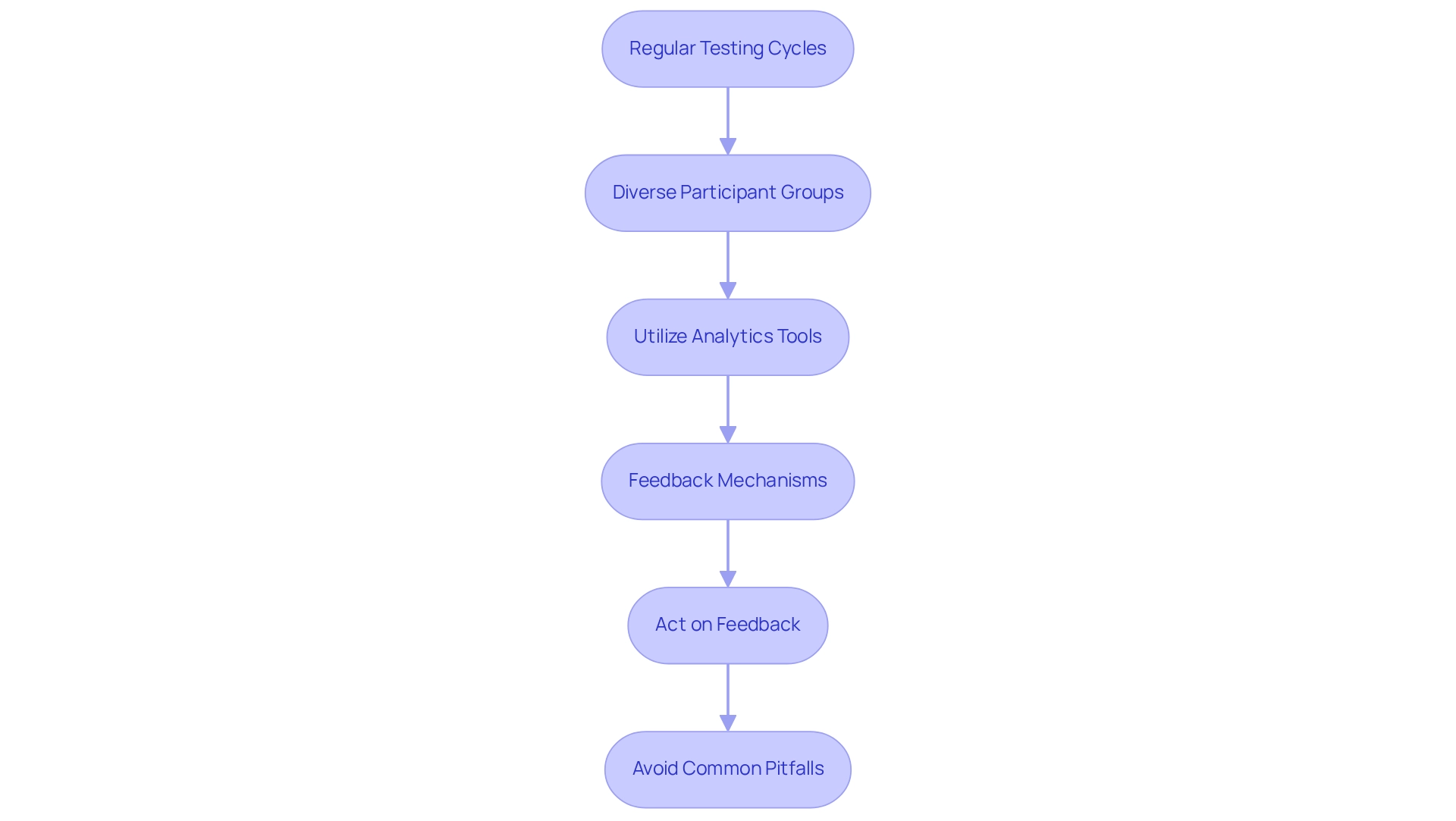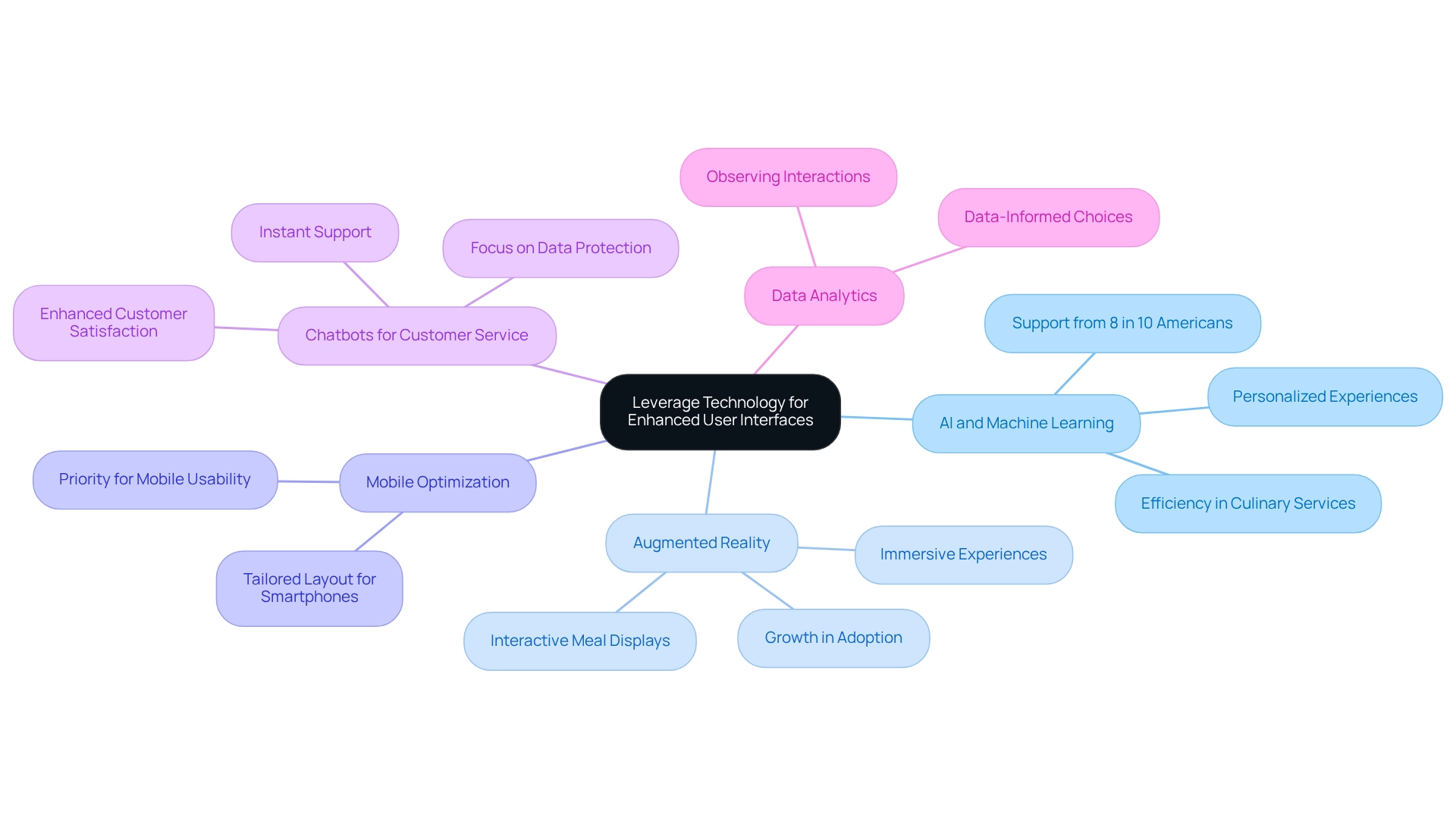Digital Branding Strategies
Best Practices for User Interface Design in the UAE Food Industry
Overview
Best practices for user interface design in the UAE food industry are anchored in user-centric principles, cultural sensitivity, continuous usability testing, and the strategic use of technology. A thorough understanding of user needs is paramount, as is the simplification of navigation and the thoughtful incorporation of local culture. These elements are essential for enhancing user experience and engagement, ultimately driving greater customer satisfaction and loyalty in a fiercely competitive market.
Introduction
In the competitive landscape of the UAE food industry, crafting user interfaces that resonate with consumers is essential. With the growing demand for seamless digital experiences, businesses must embrace user-centric design principles that prioritize:
- Understanding user needs
- Cultural sensitivity
- Continuous feedback
By leveraging technology and innovative design strategies, brands can significantly enhance user engagement and satisfaction, ultimately driving success in a market characterized by diverse preferences and rapid evolution. This article explores key approaches that empower food and beverage brands to create interfaces that not only attract users but also cultivate loyalty in an increasingly digital world.
Establish User-Centric Design Principles
To create effective interfaces in the UAE food sector, it is essential to adopt best practices for user interface design in the UAE food industry. This approach includes:
- Understanding User Needs: Conduct comprehensive research to uncover the preferences and behaviors of your target audience. Employ methods such as surveys, interviews, and analytics to gather valuable insights that inform design decisions. As emphasized by Dalia Bedewy, the literature frequently overlooks psychological factors, which are crucial for a comprehensive understanding of consumer needs.
- Creating Personas: Develop detailed audience personas representing various segments of your demographic. This practice allows designers to customize the layout to fulfill particular requirements, boosting involvement and contentment.
- Simplifying Navigation: Ensure the layout is intuitive and easy to navigate. Utilize clear labels and logical pathways to direct individuals seamlessly through the application or website, reducing frustration and enhancing usability.
- Prioritizing Accessibility: Design with inclusivity at the forefront. Follow WCAG guidelines to guarantee that your design is accessible to individuals with disabilities, thereby expanding your audience reach and improving overall experience.
- Iterative Design Process: Implement an iterative design approach that promotes ongoing enhancement based on feedback from individuals and testing outcomes. This approach permits modifications that align the interface more closely with individual expectations and needs, and by applying best practices for user interface design in the UAE food industry, we not only attract customers but also significantly enhance their overall experience, ultimately contributing to the success of beverage brands in the UAE market. Notably, the food market growth is driven by factors such as GDP per capita and consumer spending per capita, underscoring the importance of understanding user needs in this context. A successful example of user-focused development can be observed in the comprehensive campaign for Quaker Oats, which led to a substantial increase in brand engagement and consumer awareness. By aligning creative strategies with user-centric principles, brands can also contribute to achieving the UN Sustainable Development Goals related to responsible consumption.

Incorporate Cultural Sensitivity in Design
Integrating cultural sensitivity into the best practices for user interface design in the UAE food industry is crucial for success. To achieve this, consider the following key strategies:
-
Understanding Local Culture: Conduct thorough research on cultural norms, values, and preferences influencing culinary choices and dining experiences in the UAE. A study from Oxford University indicates that a third of weekday evening meals are eaten in isolation, underscoring the importance of communal dining experiences in local culture.
-
Language Considerations: Implement multilingual support, especially in Arabic and English, to effectively engage the diverse population. This approach has been shown to significantly enhance engagement in food applications by utilizing best practices for user interface design in the UAE food industry.
-
Visual Elements: Utilize culturally relevant imagery, colors, and symbols that resonate with local audiences, while steering clear of visuals that could be considered inappropriate or offensive. This is vital for creating a welcoming interface that reflects local aesthetics.
-
User Testing with Diverse Groups: Engage in usability testing with participants from various cultural backgrounds to collect feedback on design elements, ensuring inclusivity and relevance. This practice can help pinpoint common pitfalls in cultural sensitivity that designers should avoid, such as stereotypes or misrepresentations.
-
Adapting Content: Tailor content to reflect local customs and traditions, incorporating local cuisine and dining etiquette into the experience. A case study on Quaker Oats’ marketing approach illustrates how understanding local culture can lead to increased brand visibility and customer loyalty, which aligns with the best practices for user interface design in the UAE food industry. By emphasizing cultural sensitivity, brands can cultivate a deeper connection with their audience, ultimately enhancing satisfaction and fostering loyalty. WonderEight’s commitment to strategic soundness ensures that these visually appealing projects achieve measurable results, highlighting the importance of culturally aware aesthetics in the food industry.

Implement Continuous Usability Testing and Feedback
To maintain an effective user interface, establishing a comprehensive usability testing and feedback process is essential:
- Regular Testing Cycles: Conduct usability tests at various phases of the design process, from early prototypes to final products. This ensures that feedback is incorporated throughout, enhancing the overall effectiveness of the interface.
- Diverse Participant Groups: Involve a varied set of individuals in testing sessions to capture a broad spectrum of feedback and insights. This diversity is crucial for understanding different needs and preferences. Research suggests that card sorting may require 20-30 participants to capture variability in mental models, underscoring the importance of including diverse participant groups.
- Utilize Analytics Tools: Implement analytics tools to monitor user behavior, helping to identify areas where individuals encounter difficulties or abandon tasks. This data informs necessary enhancements, driving continuous improvement.
- Feedback Mechanisms: Integrate feedback tools within the platform, such as surveys or response forms, to gather insights directly from participants. This promotes continuous communication and engagement with users.
- Act on Feedback: Prioritize and implement changes based on feedback from individuals. This ensures a continuous enhancement of the interface, fostering a user-centric approach. Remember, testing with fewer participants doesn’t imply sacrificing quality; it’s about maximizing efficiency and delivering outcomes that genuinely connect with your audience, as noted by Sanjida Satter.
- Avoid Common Pitfalls: Be mindful of frequent traps in usability testing, such as testing too late in the creation process or neglecting to respond to participant feedback. These missteps can diminish the effectiveness of your efforts.
By committing to regular usability testing and adhering to best practices for user interface design in the UAE food industry, businesses can refine their interfaces to align more closely with user expectations, ultimately boosting satisfaction and engagement. For instance, HubSpot’s recent UX overhaul, guided by client feedback, led to a substantial rise in conversion rates, showcasing the tangible advantages of a client-centered approach. Moreover, studies suggest that customizing interactions, such as push notifications, can improve engagement rates by as much as 400%, highlighting the significance of personalized experiences in the dining and beverage industry. Investing in UX design that follows the best practices for user interface design in the UAE food industry not only enhances satisfaction among users but can also save companies money by minimizing the need for expensive redesigns.

Leverage Technology for Enhanced User Interfaces
Utilizing technology is crucial for adhering to the best practices for user interface design in the UAE food industry. Consider the following approaches:
- AI and Machine Learning: Implement AI-driven recommendations to personalize experiences based on historical behaviors and preferences, ensuring that each interaction feels tailored and relevant. Notably, 8 in 10 Americans endorse the notion that AI can enhance various sectors, including culinary services, making them more accessible and efficient.
- Augmented Reality (AR): Utilize AR to craft immersive experiences, such as virtual menus or interactive meal displays, which significantly enhance participant engagement and create memorable interactions. The anticipated increase in AR technology adoption within the beverage and dining sector underscores its essential role in improving customer experience.
- Mobile Optimization: Ensure that your layout is fully tailored for mobile devices, as a significant portion of individuals access food services through smartphones, making mobile usability a priority.
- Chatbots for Customer Service: Integrate chatbots to provide instant support and address inquiries, thereby enhancing overall satisfaction and streamlining communication. Prioritizing data protection and cybersecurity is crucial, as 83% of CX leaders emphasize these aspects in their customer service strategies.
- Data Analytics: Utilize data analytics to observe interactions and preferences, allowing data-informed choices that improve usability and promote a more intuitive experience.
By adopting these technological improvements, businesses can create systems that not only fulfill but surpass expectations, ultimately boosting engagement and encouraging customer loyalty. For instance, a comprehensive campaign for Quaker Oats demonstrated how innovative design and technology improved consumer interaction with their products. As Zendesk notes, AI customer service tools will continue to become more sophisticated, highlighting the evolving landscape of customer service technology, which can benefit from best practices for user interface design in the UAE food industry to ensure that user interfaces are not only functional but also engaging and secure.

Conclusion
Creating effective user interfaces in the UAE food industry requires a profound understanding of user-centric design principles, cultural sensitivity, and a commitment to continuous feedback. By prioritizing user needs through comprehensive research, brands can craft interfaces that resonate with their audience, resulting in enhanced engagement and satisfaction. Key strategies such as:
- Developing user personas
- Simplifying navigation
- Ensuring accessibility
can significantly elevate the user experience and drive success in this competitive market.
Cultural sensitivity is essential for fostering connections with diverse consumers. By understanding local customs, incorporating multilingual support, and utilizing culturally relevant design elements, brands can greatly enhance user satisfaction and loyalty. Adapting content to reflect local traditions and conducting usability testing with varied cultural groups enables brands to create an inclusive environment that resonates with users on a personal level.
Furthermore, the integration of technology—such as AI, augmented reality, and data analytics—offers innovative avenues for enhancing user interfaces. These advancements not only personalize experiences but also streamline interactions, ensuring users feel valued and understood. Businesses that commit to continuous usability testing and actively act on user feedback will refine their designs and cultivate lasting relationships with their customers.
In conclusion, embracing a holistic approach that merges user-centric design, cultural awareness, and technological innovation will empower food and beverage brands in the UAE to create compelling interfaces that attract users and foster loyalty. As the industry continues to evolve, those who prioritize these elements will excel in the digital landscape, setting benchmarks for success and customer satisfaction.
Frequently Asked Questions
What are the best practices for user interface design in the UAE food sector?
Best practices include understanding user needs, creating personas, simplifying navigation, prioritizing accessibility, and adopting an iterative design process.
Why is understanding user needs important in interface design?
Understanding user needs is crucial as it helps uncover preferences and behaviors of the target audience, allowing for informed design decisions that enhance user experience.
How can designers create effective audience personas?
Designers can create effective audience personas by developing detailed representations of various demographic segments, which helps customize the layout to meet specific user requirements.
What steps can be taken to simplify navigation in an interface?
To simplify navigation, ensure the layout is intuitive with clear labels and logical pathways that guide users seamlessly through the application or website.
What does prioritizing accessibility involve in user interface design?
Prioritizing accessibility involves designing with inclusivity in mind by following WCAG guidelines to ensure that the design is accessible to individuals with disabilities.
What is the iterative design process and why is it important?
The iterative design process involves ongoing enhancement based on user feedback and testing outcomes, allowing for modifications that better align the interface with user expectations and needs.
How do user-centric design principles contribute to the success of beverage brands in the UAE market?
By applying user-centric design principles, brands can attract customers and significantly enhance their overall experience, which contributes to the success of beverage brands in the UAE market.
What factors drive growth in the food market in the UAE?
Growth in the food market is driven by factors such as GDP per capita and consumer spending per capita, highlighting the importance of understanding user needs.
Can you provide an example of successful user-focused development?
A successful example is the comprehensive campaign for Quaker Oats, which led to a substantial increase in brand engagement and consumer awareness through alignment of creative strategies with user-centric principles.



